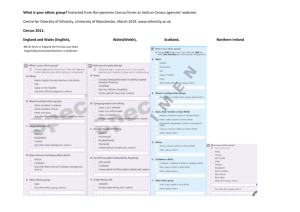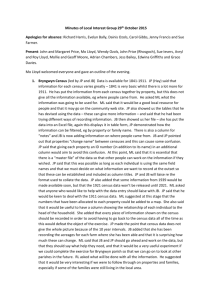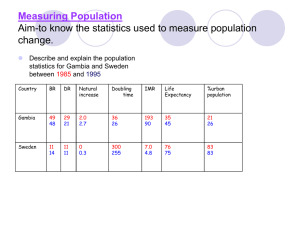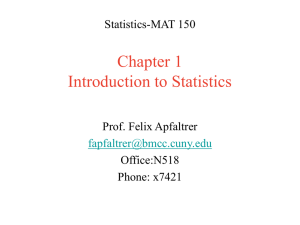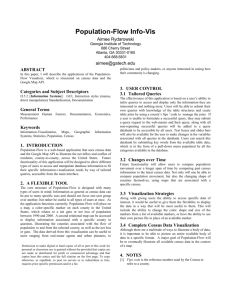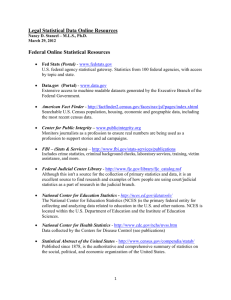Secondary data - Geography in the News
advertisement
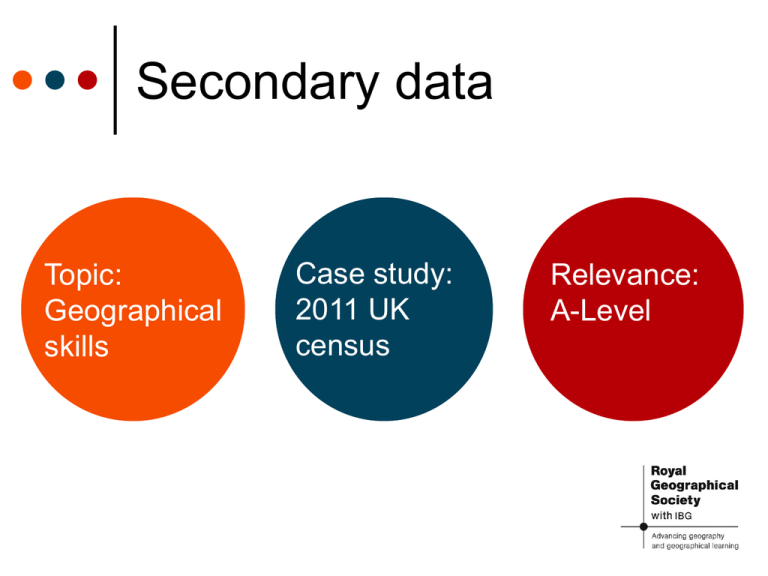
Secondary data Topic: Geographical skills Case study: 2011 UK census Relevance: A-Level Lesson aims To understand what is meant by ‘secondary data’ To illustrate how and when secondary data can aid geographical research To outline the strengths and limitations of secondary data Defining secondary data Data that is collected by someone other than the user of that data Includes: census data, housing records, attendance figures… UK population distribution The UK census gives us unique geographical insight What does this map show in relation to population density? Data source: 2011 UK Census True or false? 1. 2. 3. 4. 5. There are almost a million more women than men in the UK Eden (a part of Cumbria) has the lowest population density in England and Wales Manchester experienced the greatest percentage population growth outside London between 2001 and 2011 Kensington and Chelsea is one of only four local authority areas in England and Wales to have a declining population size. The number of households in Tower Hamlets rose by is 28% between 2001 and 2011 Using secondary data Primary data collection is costly and labour intensive Secondary data is often available in large quantities Often used as background information before collecting primary data Provides information about a time or place that a researcher cannot access The UK census Ever 10 years it is a count of the total population and records its characteristics, such as: Age Gender Employment Health Housing Transport Scales of UK census Data is geographically located, allowing spatial comparisons. Largest Smallest Countries (England, Wales, Scotland & Northern Ireland) Regions (9 in total, e.g.: North East & West Midlands) Counties (36 in total, e.g.: Essex, North Yorkshire) Districts, boroughs and local authorities (local government) Electoral Wards (average of 6,000 residents) Lower Super Output Areas (average of 1,500 residents) Output Areas (Average of 300 residents) UK census methodology Carried out every 10 years since 1801, most recently in 2011 Each household in the UK receives a questionnaire in the post. Submitted either online or by post. Eastern European countries carry out interviews rather than questionnaires. Using census data Data helps us understand the UK population, which is always changing It is used by government, businesses, academics and NGOs Helps in large-scale planning, e.g.: Population count helps govt. allows distribute funds to local authorities Data on long-term illness and carers helps plan social services Limitations of secondary data Need to establish reliability and accuracy of data source It only represents one moment in time Not all people may be accounted for People may not tell the truth Data may be biased Researchers rely on the questions asked by the original survey Misleading data? = 1000 people 176,632 people claimed to be ‘Jedi Knights’ in the 2011 UK census. This highlights possible limitations associated with self-defining categories Defining religion Question 20 on the 2011 UK census asked: ‘What is your religion’ This is a voluntary question By answering the closed question with ‘Any other religion’, participants are able to answer an open question and define their own religion Your local area http://www.guardian.co.uk/uk/interactive/2012/dec/ 13/census-2011-truth-where-you-live-interactive Are there any surprising figures? Can you explain some of the more major changes? Plenary True 1. True 2. True 3. True 4. True 5. There are almost a million more women than men in the UK Eden (a part of Cumbria) has the lowest population density in England and Wales Manchester experienced the greatest percentage population growth outside London between 2001 and 2011 Kensington and Chelsea is one of only four local authority areas in England and Wales to have a declining population size The number of households in Tower Hamlets rose by is 28% between 2001 and 2011 Plenary Evaluate five claims made by the 2011 UK census on the previous slide What explanations can we provide for each statement? Use your knowledge of: Geographical processes Limitations of secondary data Geography in the News This resource is available from: www.geographyinthenews.rgs.org Visit for worksheets, teachers’ notes, videos and more…
